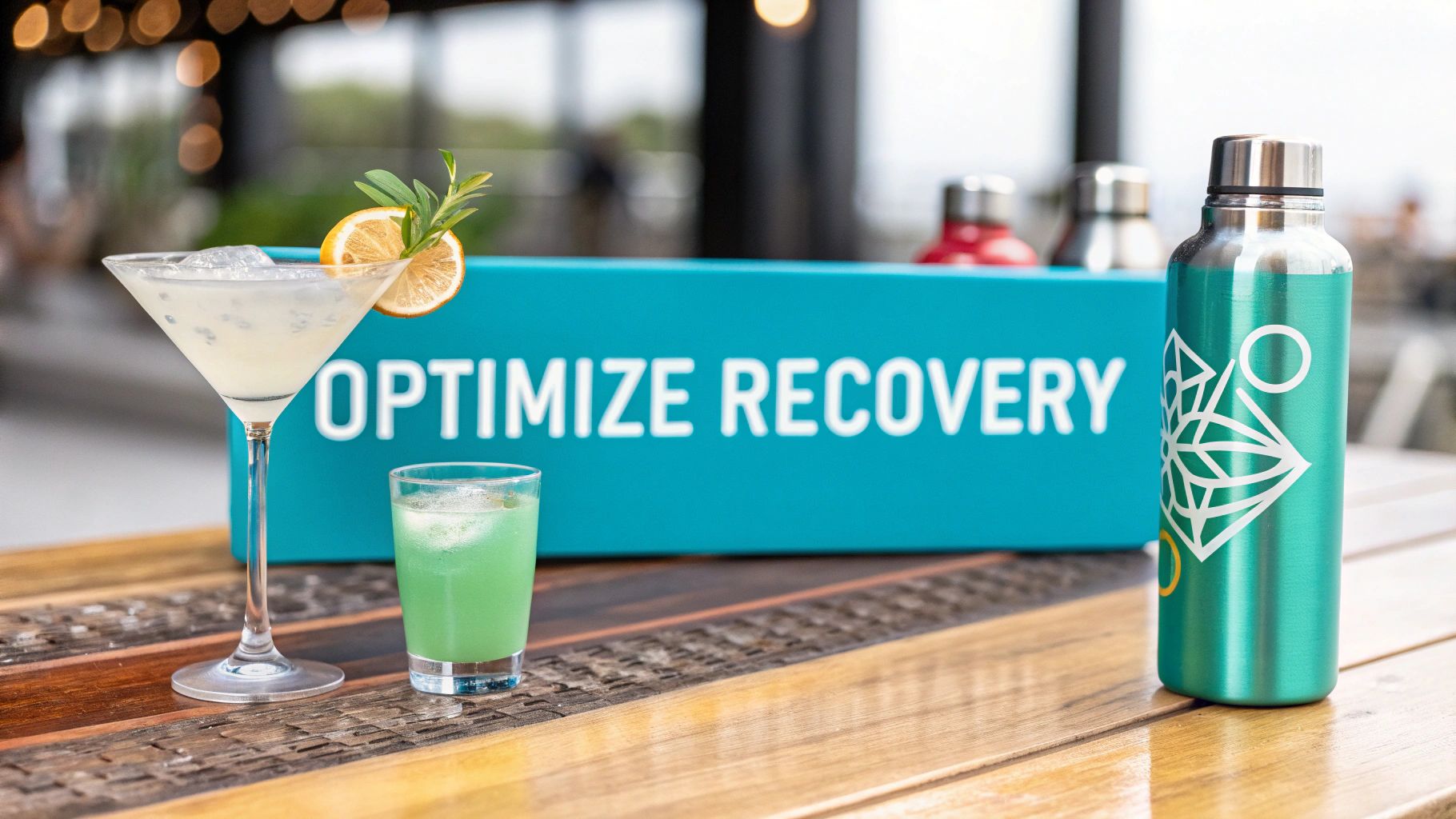

· By Annemarie
Liquid IV After Drinking: Optimize Recovery
The Science Behind Alcohol's Dehydration Effect
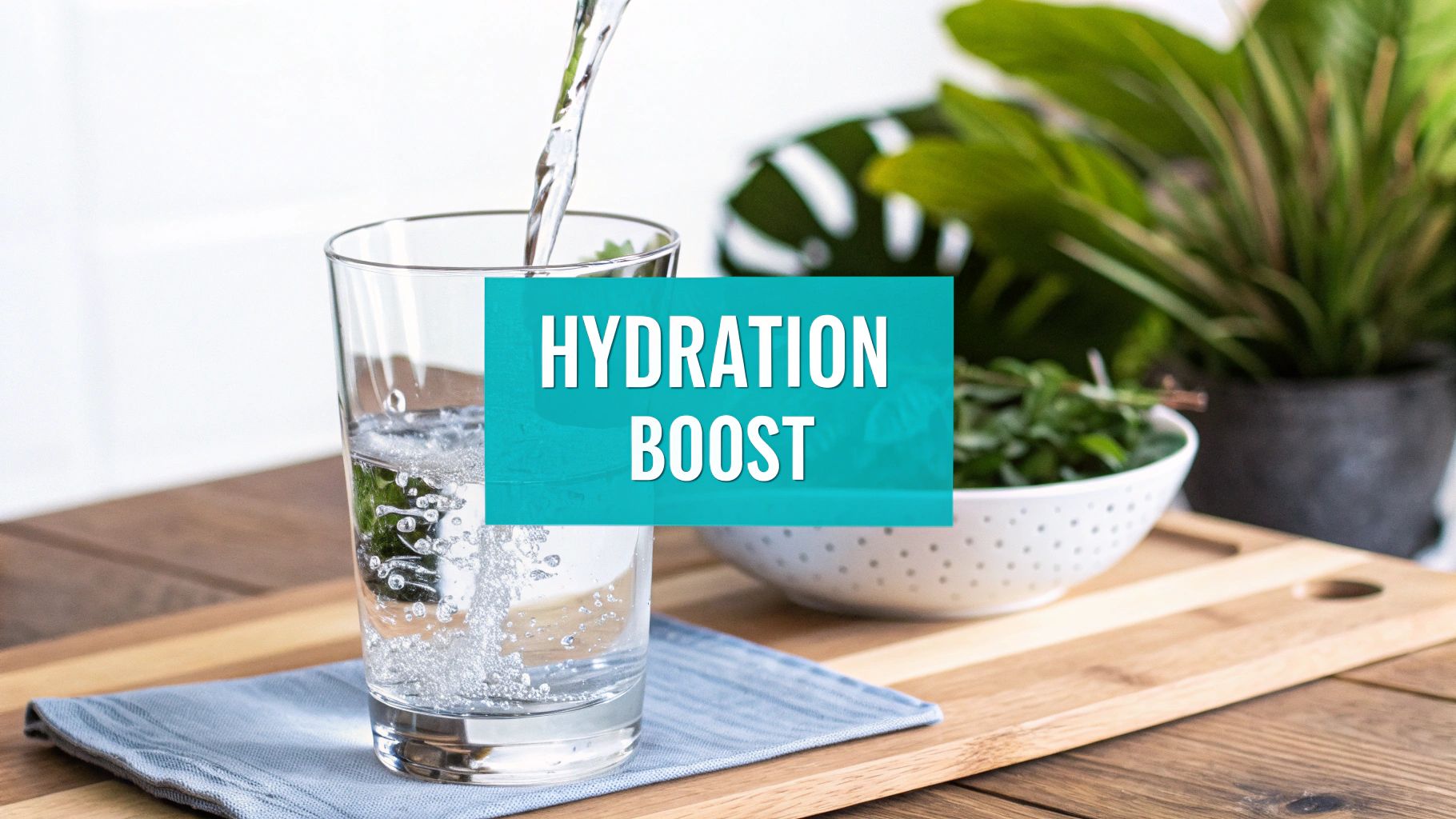
While enjoyable for many, alcohol disrupts the body's hydration balance. It acts as a diuretic, increasing urine production. This means your body expels more fluid than it takes in with each alcoholic beverage. This fluid loss contributes significantly to dehydration.
Alcohol also suppresses the production of antidiuretic hormone (ADH). ADH signals your kidneys to conserve water. Alcohol interferes with this process, leading to further fluid loss and increased dehydration. This explains the frequent bathroom trips after drinking.
Electrolyte Imbalance and Hangover Symptoms
Dehydration doesn't just cause thirst; it also depletes essential electrolytes like sodium and potassium. These electrolytes are crucial for nerve and muscle function, maintaining blood pressure, and fluid balance. Their depletion contributes to common hangover symptoms.
For example, low potassium can cause muscle weakness and fatigue. Sodium imbalances can cause headaches and nausea. This connection between dehydration, electrolyte imbalance, and hangovers highlights the importance of rehydration after consuming alcohol.
Proper rehydration helps replenish lost fluids and electrolytes, lessening hangover severity. Liquid I.V. uses Cellular Transport Technology (CTT) to deliver electrolytes and fluids quickly into the bloodstream, making it a popular hangover remedy. Hydration after alcohol is crucial because of its dehydrating effects and impact on electrolyte balance. Learn more about this topic. You can also explore our blog sitemap for more health-related content.
The Importance of Targeted Rehydration
Drinking water helps with rehydration, but it doesn't fully address electrolyte imbalance. This is where targeted rehydration solutions like Liquid IV can be beneficial after drinking. By providing electrolytes and glucose, these solutions help restore balance more effectively than water alone. This can lead to a faster and more complete recovery.
Liquid IV Decoded: How It Transforms Your Recovery
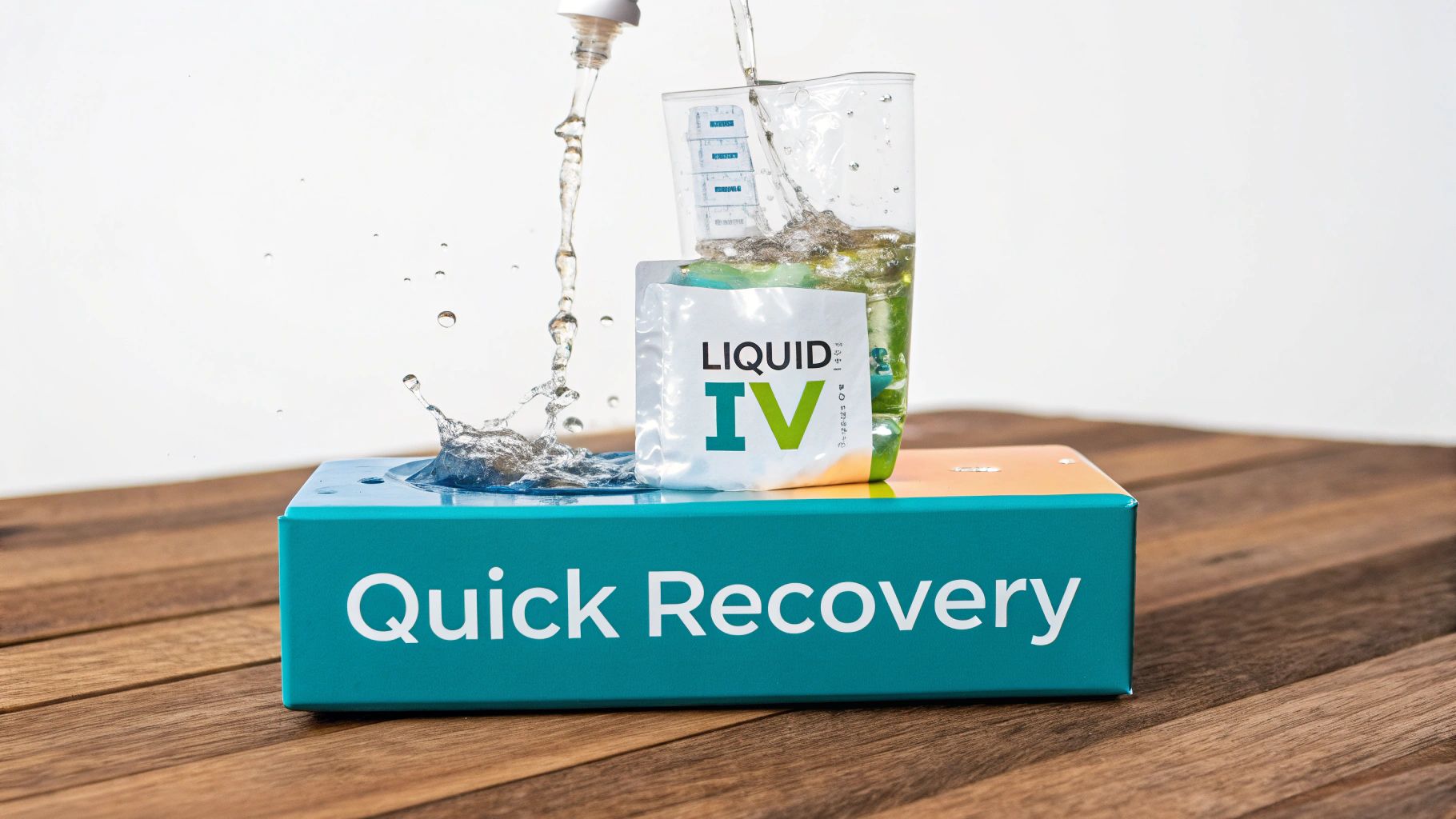
Beyond simple rehydration, Liquid IV uses Cellular Transport Technology (CTT) to boost how your body absorbs fluids and electrolytes. This technology works by harnessing the relationship between sodium, glucose, and water. By getting the balance of these components just right, Liquid IV helps your small intestine absorb them more efficiently. This means faster hydration compared to drinking just water.
The Power of CTT After Drinking
After a night of drinking, your body needs to replenish fluids and electrolytes. Alcohol has a diuretic effect, meaning it makes you lose water more quickly. CTT helps counteract this dehydration by quickly replenishing what's been lost, minimizing those pesky hangover symptoms.
For example, the fast delivery of electrolytes helps restore the balance needed for your nerves and muscles to function correctly. This can help with fatigue and muscle weakness. The quick rehydration also helps address headaches and nausea.
Understanding the Science of Absorption
The precise ratio of electrolytes and glucose in Liquid IV isn't random. It's based on the scientific principle of osmolality, which describes the concentration of particles in a solution. Liquid IV’s carefully balanced osmolality maximizes your body’s ability to absorb it quickly.
This specific formulation impacts how your body responds compared to regular sports drinks or water. While water is crucial, it doesn't contain the electrolytes needed after alcohol consumption. Many sports drinks are less effective because of their high sugar content, which can hinder absorption.
To illustrate the differences more clearly, let's look at the following comparison:
Liquid IV vs. Traditional Hydration Methods
Comparison of Liquid IV to water, sports drinks, and other hydration methods after alcohol consumption
| Hydration Method | Speed of Absorption | Electrolyte Content | Sugar Content | Effectiveness After Drinking |
|---|---|---|---|---|
| Liquid IV | High | High | Moderate | Very High |
| Water | Moderate | Low | None | Low |
| Sports Drinks | Moderate | Moderate | High | Moderate |
| Coconut Water | Moderate | Moderate | Moderate | Moderate |
As you can see, Liquid IV offers a compelling combination of rapid absorption and electrolyte replenishment, making it a strong choice for post-alcohol hydration.
Liquid IV's Market Dominance
Liquid I.V. has made a big splash in the sports drink mix market. In 2024, Liquid I.V. reached the top spot in the United States with about $439 million in sales, exceeding well-known brands like Gatorade. This reflects the rising demand for effective hydration products. Find more detailed statistics here. This growth emphasizes how Liquid IV successfully fulfills the need for fast and effective rehydration, especially after consuming alcohol.
What Liquid IV Actually Does For Your Hangover
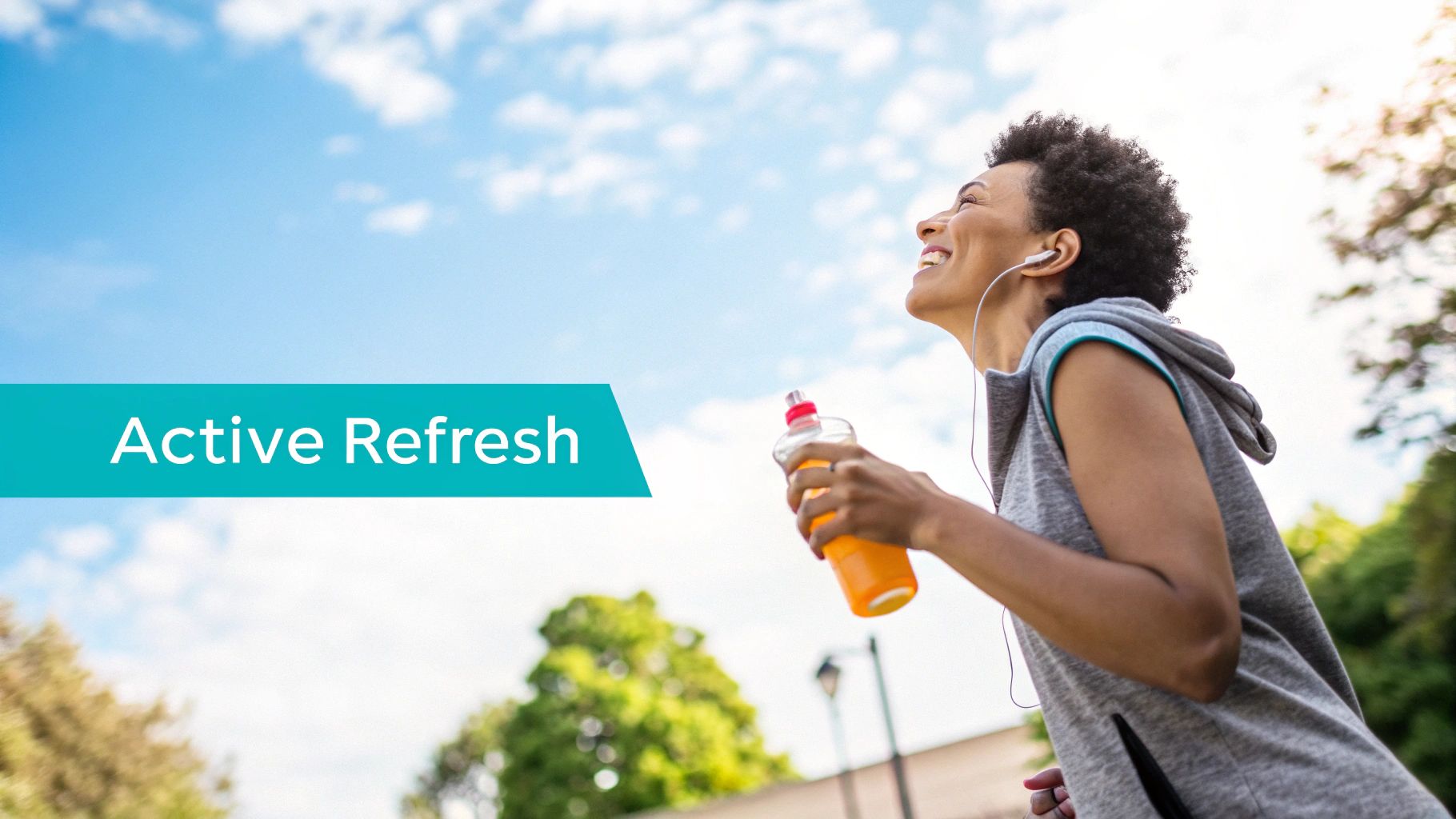
Liquid IV is marketed as a potent remedy for hangovers. But how does it actually work to combat that morning-after feeling? The secret lies in its formula, designed to address the root causes of a hangover: dehydration and electrolyte imbalance. Alcohol acts as a diuretic, flushing essential fluids and electrolytes from your body. This depletion contributes significantly to common hangover symptoms.
Addressing Dehydration and Electrolyte Loss
Liquid IV's primary goal is to quickly replenish these lost resources. The specific blend of electrolytes, including sodium and potassium, works together to restore balance. This rehydration process helps alleviate symptoms such as headaches, nausea, and fatigue. It's similar to recharging a drained battery – Liquid IV provides the boost your system needs to get going again.
Potassium, for instance, is essential for proper muscle function. Replenishing potassium levels can help with muscle weakness and fatigue often experienced during a hangover. Sodium, crucial for fluid balance, can help reduce headaches and nausea. These electrolytes, along with glucose, promote the efficient absorption of water into your bloodstream. This is where Liquid IV's Cellular Transport Technology (CTT) plays a vital role.
The Role of CTT in Hangover Recovery
CTT enhances the delivery of fluids and electrolytes into your bloodstream. It optimizes the ratio of sodium, glucose, and water to maximize absorption in the small intestine. This means Liquid IV rehydrates you more effectively than plain water.
The rapid delivery of electrolytes through CTT also helps restore the balance necessary for proper nerve and muscle function. This can further minimize muscle weakness, fatigue, headaches, and nausea, all common hangover symptoms. This quick rehydration is what sets Liquid IV apart from other hydration methods.
Liquid IV and the Growing Hydration Market
The increasing emphasis on hydration and wellness, especially after alcohol consumption, is driving substantial growth in the hydration supplement market. In 2024, this market was valued at approximately $36 billion. Projections indicate it will reach $82.7 billion by 2034, representing a significant 7.9% CAGR. Discover more insights about this growth here. Liquid IV is well-positioned within this expanding market to meet the rising consumer demand for effective post-alcohol recovery solutions. You might also be interested in: Checking out our related products.
Mastering Your Liquid IV Timing Strategy
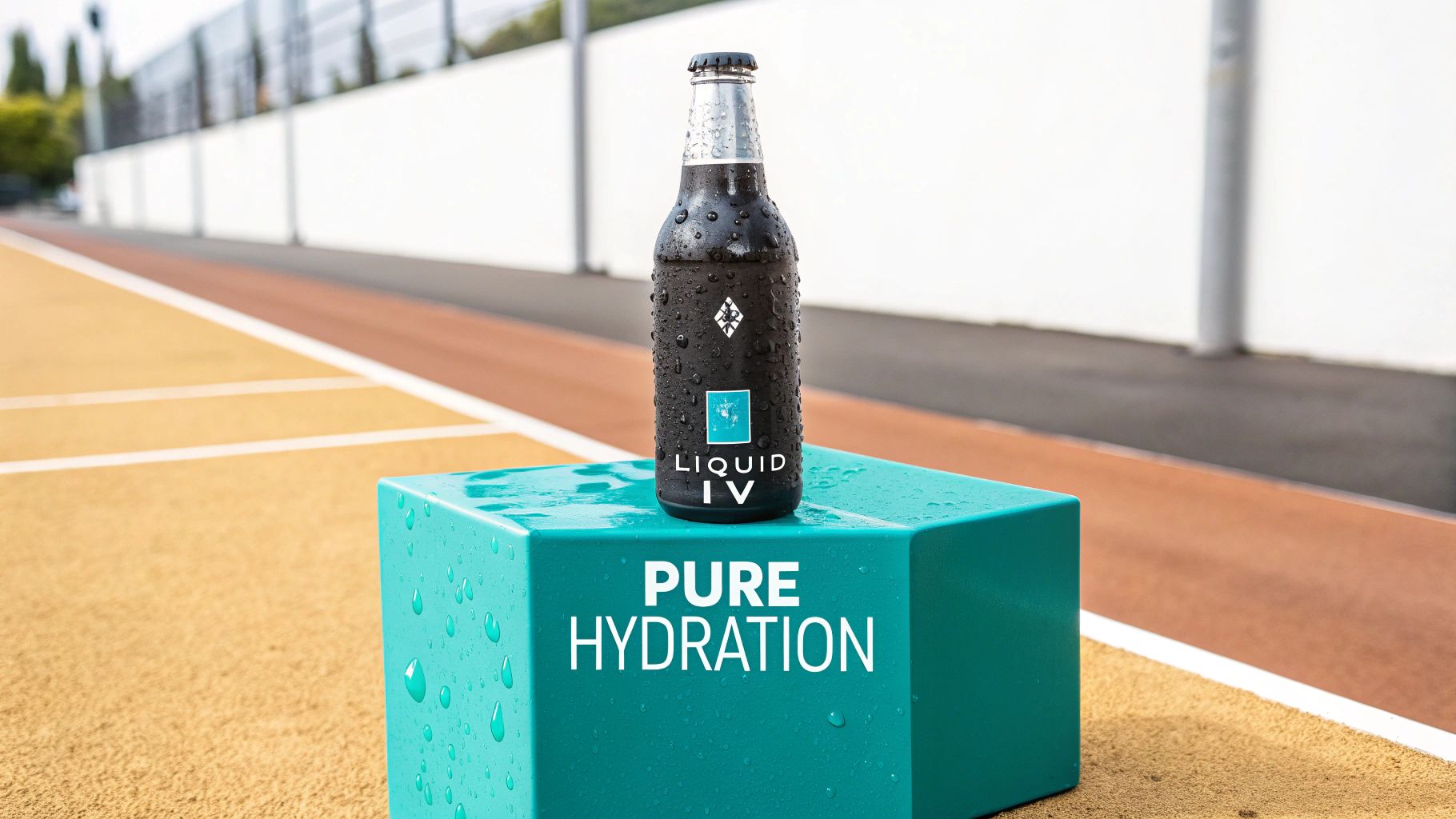
Timing is crucial for maximizing the effectiveness of Liquid IV after drinking. Many people reach for it the morning after, but a strategic approach throughout your drinking experience can significantly improve its benefits. This involves understanding when and how to use Liquid IV for optimal hangover prevention and recovery.
Pre-Gaming Hydration: Setting the Stage
Before the party starts, consider pre-gaming with Liquid IV. This proactive step can establish a strong hydration baseline, preparing your body for alcohol's dehydrating effects. This is especially helpful for those prone to dehydration or planning a long night out.
Think of it like warming up before exercise. Stretching helps prevent injuries, and pre-gaming hydration helps mitigate the negative impacts of alcohol. This can lessen the severity of hangover symptoms the following day.
Maintaining Hydration Throughout the Night
Drinking Liquid IV between alcoholic beverages is another effective strategy. This helps replenish fluids and electrolytes lost due to alcohol's diuretic effect. It can also help pace your alcohol consumption, promoting responsible drinking.
Remember, moderation is essential. While helpful, excessive electrolyte consumption can cause imbalances. Baton Rouge General advises against excessive electrolyte intake if you are not actively losing them through intense exercise or illness. They recommend water as the best choice for hydration under normal circumstances.
The Morning After: Replenishing and Recovering
The morning after drinking, Liquid IV can be invaluable. It helps replenish lost fluids and electrolytes, addressing the root causes of hangover symptoms. For optimal relief, consume Liquid IV as soon as you wake up. This jumpstarts the rehydration process, giving your body the resources it needs to recover.
Also, consider your individual needs. Body weight, drinking intensity, and individual dehydration risk factors influence how much Liquid IV you might need. For personalized guidance, consult a healthcare professional.
Practical Tips for Maximizing Liquid IV's Effectiveness
-
Proper Mixing: Mix one stick of Liquid IV with 16 ounces of water. Ensure the powder dissolves completely for maximum absorption.
-
Flavor Fatigue: Switch up the flavors to combat flavor fatigue and keep your hydration routine enjoyable.
-
Interactions: Be aware of potential interactions with other medications or hangover remedies. Consult your doctor if you have any concerns.
The following table provides a helpful guide for using Liquid IV effectively around drinking occasions.
Optimal Liquid IV Usage Timeline
Detailed schedule for when to take Liquid IV around drinking occasions for best results
| Timing | Recommendation | Benefit | Notes |
|---|---|---|---|
| Before Drinking | 1 serving of Liquid IV | Establishes hydration baseline | Especially beneficial for longer nights or dehydration-prone individuals |
| During Drinking | 1 serving between every 2-3 drinks | Maintains hydration, paces alcohol consumption | Avoid overconsumption of electrolytes |
| Morning After | 1 serving upon waking | Replenishes fluids and electrolytes, combats symptoms | Adjust dosage based on individual factors and consult a doctor if needed |
This timeline offers a practical approach to incorporating Liquid IV into your drinking routine. By following these guidelines, you can proactively address hydration needs and minimize the unpleasant effects of alcohol consumption. Remembering these timing strategies and practical tips can help you effectively use Liquid IV to minimize hangover symptoms and optimize your recovery.
Real Drinkers Share Their Liquid IV Recovery Stories
After exploring the science behind Liquid IV and its suggested strategies, the big question remains: does it really deliver? To find out, we've collected real stories from a range of Liquid IV users. These individuals represent a spectrum of drinking habits, from the occasional social drinker to those who imbibe more frequently. Their honest feedback provides valuable insights into Liquid IV's effectiveness.
Experiences Across Different Drinking Habits
We wanted a diverse range of perspectives, including individuals with varying tolerance levels and drinking frequencies. This broad scope of experiences offers a more complete understanding of how Liquid IV performs in different scenarios. Some of our users enjoy a casual drink on the weekends, while others regularly attend social gatherings that involve alcohol. Some might have one or two drinks, while others consume considerably more.
These varied drinking habits provide a robust testing ground for Liquid IV. We aimed to determine if its reported effectiveness changes based on the amount of alcohol consumed. This information helps us create a more accurate picture of its potential benefits for various types of drinkers.
Symptom Relief and Recovery Timelines
Users shared which hangover symptoms, if any, they felt responded best to Liquid IV. Many reported noticeable relief from headaches, nausea, and fatigue—common symptoms often linked to dehydration and electrolyte imbalance. However, it's important to acknowledge that not everyone experienced complete symptom elimination. Some individuals reported some lingering effects even after using the product.
Recovery timelines also varied. Some users felt back to normal within a few hours, while others noticed a more gradual recovery. This variation highlights the influence of individual factors like metabolism and overall health. Learn more in our article about the sitemap page.
Honest Assessments and Realistic Expectations
By gathering these candid accounts, we aim to present a balanced perspective on Liquid IV. It's not a magic bullet, but many users found it helpful in their recovery process. Individual results will always vary, and it's essential to manage expectations accordingly.
These real-world experiences offer valuable insight into Liquid IV's potential benefits and limitations after drinking. Understanding these nuances can help you decide if it's the right choice for your own post-drinking recovery. The ultimate goal is to find what works best for you and supports your well-being.
The Hangover Relief Showdown: How Liquid IV Compares
After a night of indulging in alcoholic beverages, many people search for a quick solution to ease their hangover symptoms. Liquid IV is often promoted as an effective remedy, but how does it truly stack up against other options? This section provides an objective comparison of Liquid IV with traditional methods, natural remedies, and other specialized hangover products.
Hydration Efficiency and Electrolyte Profiles
Rehydration is a cornerstone of hangover recovery. Liquid IV highlights its Cellular Transport Technology (CTT), which it claims enhances the absorption of fluids and electrolytes. While plain water is essential, it lacks the electrolytes necessary to correct imbalances caused by alcohol. Sports drinks often contain high levels of sugar, which can potentially impede absorption and worsen dehydration.
Natural remedies like coconut water and Pedialyte offer some electrolytes, but their concentrations might not be as precisely formulated as Liquid IV for post-alcohol recovery. Other specialized hangover products vary widely in their ingredients and reported effectiveness. Some prioritize symptom relief rather than tackling the underlying dehydration and electrolyte imbalance.
Sugar Content and Price-Per-Recovery
Sugar content is another important factor to consider. While glucose contributes to Liquid IV’s CTT, the sugar levels may be a concern for some individuals. Comparing sugar content across various options is crucial for those mindful of their sugar intake. Furthermore, the price-per-recovery should be evaluated. Liquid IV can be pricier than alternatives, making a cost-effectiveness assessment important.
Considering both sugar content and cost allows for a more informed choice. It's about finding the right balance between effective hydration and individual health goals and budget.
Convenience, Taste, and Scientific Backing
Convenience is a key factor for many. Liquid IV’s individual packets are easy to mix and consume, particularly while traveling or on the go. Options like plain water or homemade electrolyte drinks can be less convenient. Taste also matters. Liquid IV comes in a range of flavors, offering more variety than some other methods.
Finally, evaluating the scientific validation supporting each option is vital. While anecdotal evidence can be informative, scientific studies provide a stronger basis for determining effectiveness. Reviewing research and clinical trials related to each product is key for informed decision-making.
Complementary Strategies for a Holistic Approach
While rehydration plays a vital role, combining Liquid IV with other strategies can enhance recovery. These include:
-
Eating a nutritious meal: Replenishing essential nutrients lost due to alcohol consumption supports the body’s overall recovery process.
-
Resting: Allowing your body adequate time to rest is vital for minimizing hangover symptoms.
-
Over-the-counter pain relievers: For persistent headaches, consider using pain relievers judiciously and according to the recommended dosage.
By incorporating these complementary strategies, you can address multiple facets of hangover recovery. This multifaceted approach can lead to faster and more complete relief.
Making the Right Choice for Your Hangover Recovery
Choosing the best hangover remedy depends on personal needs and preferences. Liquid IV presents a convenient and potentially efficient way to address dehydration and electrolyte imbalance. However, other methods might be better suited depending on your budget, sugar preferences, and the level of scientific backing you prioritize.
Carefully considering these factors can help you decide whether Liquid IV, or a different approach, is the right fit for your hangover recovery strategy. Understanding the advantages and disadvantages of each option allows you to make informed decisions for a more comfortable recovery.
